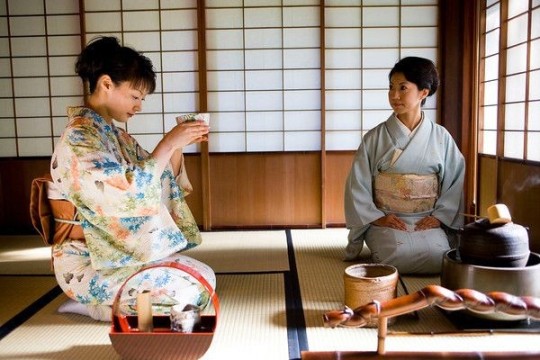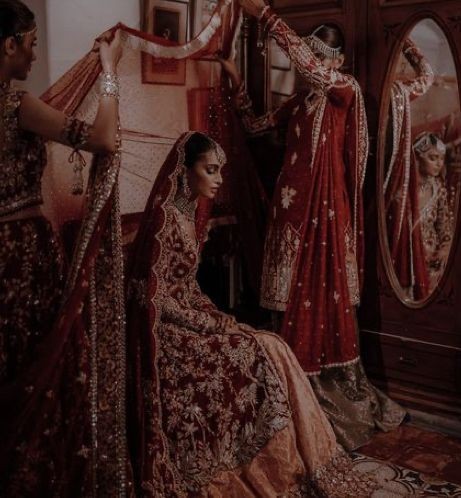Claire X Leon Side blog for fics, drabbles and other stuff
Last active 60 minutes ago
Don't wanna be here? Send us removal request.
Text
Notes from Stephen King’s “On Writing” 07: The Revision Process

Next, King walks us through his revision process. He makes it clear that this method is not the only method. It is merely a method.
How Many Drafts?
“For me, the answer has always been two drafts and a polish (with the advent of word-processing technology, my polishes have become closer to a third draft).”
King admits that this number of drafts is not the golden rule. Kurt Vonnegut rewrote each page of his novels until he got them exactly the way he wanted them. This meant that when the manuscript was finished, the book was finished. (I certainly am not that big of a perfectionist, nor am I that patient lol.)
For beginner writers in particular, King offers the following advice:
“Let me urge that you take your story through at least two drafts; the one you do with the study door closed and the one you do with it open.
“This first draft–the All-Story Draft–should be written with no help (or interference) from anyone else. There may come a point when you want to show what you’re doing to a close friend because you’re proud of what you’re doing or because you’re doubtful about it. My best advice is to resist this impulse. Keep the pressure on; don’t lower it by exposing what you’ve written to the doubt, the praise, or even the well-meaning questions of someone from the Outside World. Let your hope of success (and your fear of failure) carry you on, difficult as that can be. There’ll be time to show off what you’ve done when you finish…but even after finishing I think you must be cautious and give yourself a chance to think while the story is still like a field of freshly fallen snow, absent of any tracks save your own.”
Basically, King just wants you to get it all out onto the paper, with no external forces influencing you (for better or for worse). Just get that first draft out, and then open it up for closer examination both to yourself and others.
Let It Breathe and Then Dig In!
Okay, so you finished writing the first draft! Celebrate! Rejoice! Maybe cry!
…And then throw that manuscript into a drawer, lock it up tight, and don’t look at it for a minimum of six weeks. And in the meantime, do something totally unrelated to what you wrote. Get into knitting. Write a short story that is nothing like what you just finished. It’s consumed you for months now–so give your mind and imagination some time to reset and chill.
King recommends a minimum of six weeks, but even longer is okay. Resist all temptation to peek at it. And once the six weeks have passed, do the following:
“Take your manuscript out of the drawer. If it looks like an alien relic bought at a junk-shop or a yard sale where you can hardly remember stopping, you’re ready. Sit down with your door shut, a pencil in your hand, and a legal pad by your side. Then read your manuscript over.
“Do it all in one sitting, if possible. Make all the notes you want, but concentrate on the mundane housekeeping jobs, like fixing misspellings and picking up inconsistencies. There’ll be plenty; only God gets it right the first time and only a slob says, ‘oh well, let it go, that’s what copyeditors are for.’
“If you’ve never done it before, you’ll find reading your book over after a six-week layover to be a strange, often exhilarating experience. It’s yours, you’ll recognize it as yours, even be able to remember what tune was on the stereo when you wrote certain lines, and yet it will also be like reading the work of someone else, a soul-twin, perhaps. This is the way it should be, the reason you waited. It’s always easier to kill someone else’s darlings than it is to kill your own.”
You’ll also be on the lookout for any glaring holes in the plot or character development. And if you spot any of these big holes, you are forbidden from feeling depressed about them. Don’t be hard on yourself. Everybody makes mistakes, and they can all be fixed.
Generally King goes through the first reading fixing all the superficial issues, like typos and unclear antecedents. But as he’s doing that, he’s also asking himself the Big Questions:
Is this story coherent?
If it is, what will turn coherence into a song?
What are the recurring elements?
Do they entwine and make a theme?
What’s it all about?
“Most of all, I’m looking for what I meant, because in the second draft I’ll want to add scenes and incidents that reinforce that meaning. I’ll also want to delete stuff that goes in other directions. There’s apt to be a lot of that stuff, especially near the beginning of a story, when I have a tendency to flail.”
I can understand what King is saying here about the flailing at the beginning. Because I do not plot when I write, I have ideas that crop up halfway through that would require being introduced earlier, for example. Or perhaps as my understanding of the characters evolved as I wrote more, I realize that they behaved out-of-character earlier on. This is certainly one downside to not plotting. But isn’t is also kinda liberating to be able to take detours and wind up at a different but equally interesting destination?
Okay. So go ahead and fix all of the issues you found, and your first revision is complete.
Second Opinions and the Second Revision
“Do all opinions weigh the same? Not for me.”
Now you’re done with the first draft. You’ve patched over any plot holes and smoothed out those typos and grammar mistakes. You’ve polished the symbols and themes until they shine.
Once this is done, King gives a copy of work to his wife and several close friends (4-8) to receive detailed feedback. In other words, he has several close friends beta for him.
“Many writing texts caution against asking friends to read your stuff, suggesting you’re not apt to get a very unbiased opinion from folks who’ve eaten dinner at your house and sent their kids over to play with your kids in your backyard.
“The idea has some validity, but I don’t think an unbiased opinion is exactly what I’m looking for. And I believe that most people smart enough to read a novel are also tactful enough to find a gentler mode of expression than ‘This sucks.’ Besides, if you really did write a stinker, wouldn’t you rather hear the news from a friend while the entire edition consists of a half-dozen Xerox copies?”
What he gets back is 4-8 very detailed and different analyses of what he wrote. What’s very important to remember is that every reader looks at a work through a different lens. If half of them say a character’s portrayal is far-fetched but the other half say the opposite, than their feedback regarding that point has balanced out. However, if the majority of them say that something doesn’t work, then King goes back and sees if he can improve it.
Also, different readers pick up on different details. This is the age of internet and now we are able to check facts whenever we like, but it is still nice to have something of a subject matter expert on hand, because they are liable to pick up on details that the writer may not.
For example, I often beta fanfiction for anime. I am fluent in Japanese, live in Japan, and have studied Japanese culture and history. While I would never claim to be a “subject matter expert” on Japan, I am able to make certain corrections regarding, say, the type of kimono a character should be wearing, that the writer would not have considered.
It’s very easy to accept feedback that deals with facts (i.e. a beta corrects you on the standard procedures for CPR). However, it’s much harder to handle subjective feedback (i.e. “The ending felt inconclusive.”). Having put as much work as you have into creating this, it can feel like a personal attack because this story is a very dear part of you. What do you do if your beta tells you something like this?
“Subjective evaluations are, as I say, a little harder to deal with, but listen: if everyone who reads your book says you have a problem, you’ve got a problem and you better do something about it.
“Plenty of writers resist this idea. They feel that revising a story according to the likes and dislikes of an audience is somehow akin to prostitution. … But come on, we’re talking about half a dozen people you know and respect. If you ask the right ones, they can tell you a lot.
“Do all opinions weigh the same? Not for me. In the end I listen most closely to [my wife], because she’s the one I write for, the one i want to wow. If you’re writing primarily for one person besides yourself, I advise you pay very close attention to that person’s opinion. And if what you hear makes sense, then make the changes. You can’t let the whole world into your story, but you can let in the ones that matter the most. And you should.”
I think, especially in the age of prolific fanfiction in which the author usually updates as they write the story, the author feels a lot of pressure from their readers. Readers chomping at the bit for the main characters to have a naughty scene, or demanding to know about that one secret thing that you keep alluding to. A lot of fanfic writers struggle to tow the line of “writing a good story based on reader feedback” and “pandering.”
My advice to fanfic writers out there is to tell those thirsty readers to read a one-shot if they’re looking for a quick fix of smut, and to have some goddamn patience. You’re trying to tell a story, one that builds and progresses, and that takes time. Don’t give in to those “OMG MAKE THEM KISS ALREADY” reviews. But if a lot of readers say something like, “I feel like this character wouldn’t do that,” then perhaps you should re-evaluate that.
On Pace and Reducing Glut
“Formula: 2nd Draft = 1st Draft - 10%.”
So now you have your first draft done. You have your feedback from your trusted betas. And now you need to go and make the final changes.
King states that you should rely on your most trusted betas to gauge whether or not your story is paced correctly and if you’ve handled the back story in satisfactory fashion. “Pace” is the speed at which your narrative unfolds.
”There is a kind of unspoken (hence undefended and unexamined) belief in publishing circles that the most commercially successful stories are novels are fast-paced. I guess the underlying thought is that people have so many things to do today, and are so easily distracted from the printed word, that you’ll lose them unless you become a kind of short-order cook, serving up sizzling burgers, fries, and eggs over easy just as fast as you can.
“But you can overdo the speed thing. Move too fast and you risk leaving the reader behind, either by confusing or by wearing him/her out. … I believe each story should be allowed to unfold at its own pace, and that pace is not always double time. Nevertheless, you need to beware–if you slow the pace down too much, even the most patient reader is apt to grow restive.”
So how can you strike a happy medium? Rely on your most trusted betas and their input. King says, “Every story and novel is collapsible to some degree. If you can’t get out ten percent of it while retaining the basic story and flavor, you’re not trying very hard. The effect of judicious cutting is immediate and often amazing. You’ll feel it and your betas will too.”
On backstory, King issues some opinions and advice:
It’s important to get the backstory in as quickly as possible, but it’s also important to do it with some grace.
A reader is more interested in what’s going to happen instead of what already did.
Even when you tell your story in a straightforward manner, you’ll discover you can’t escape at least some backstory.
“The most important things to remember about backstory are that (a) everyone has a history and (b) most of it isn’t very interesting. Stick to the parts that are, and don’t get carried away with the rest.”
Source: King, Stephen. On Writing: A Memoir of the Craft. Hodder, 2012.
531 notes
·
View notes
Text
Classic German Kids TV Shows

Sitzt du vor der Glotze? If the answer is yes, you are in good company. Though the verdict isn’t out yet on the consequences of long-term exposure to screens, we in the meantime still have fond memories of watching our favorite shows as kids. Though more recently some of our shows have been imported from the United States, such as Spongebob or The Simpsons, many were German products or co-productions and somewhat telling of the time period they were created in.
Pro tip: Though it can be embarrassing to be caught watching these, it is GREAT practice for German learners. The vocab tends to be simple and repetitive and the situations applicable to everyday life. This is not to mention that the songs, whether you want them to or not, will be burned in your memory for-ev-er.
Here is our shortlist of our favorite German children’s shows:
Sandmännchen (Little Sandman)
youtube
A kids show with both a GDR and an FRG version is a good example of how even children’s television can reflect politics. Sandmaennchen was a parents best friend in that it was a “bedtime” show designed to get kids ready for bed. The pace of this show and the use of puppets may remind American viewers of Mr. Roger’s Neighborhood. The difference between the two versions is subtle–with the FRG version being slightly more “modern” looking.
Die Sendung mit der Maus (The Program with the Mouse)

Called the “School of the Nation”, this weekly children’s series entered the scene in the 1970s. Short animated clips explained different things from everyday life from how cars work to how movies are made.
Löwenzahn (Dandelion)
youtube
These magical 30 minute episodes centered on host Peter Lustig, who lives in a imaginative converted caravan. From there he goes on a journey of discovery, explaining to a new concept about the connections between nature, environment and technology.
Siebenstein
youtube
In Siebenstein, Frau Siebenstein owns a shop which buys and sells second-hand goods. The shop is also home to a raven called Rudi and a suitcase called “Suitcase”. To say that they can both talk would be an understatement. They spend most of their time bickering like children but are the best of friends at heart. Frau Siebenstein uses something a customer has brought in or bought that day as inspiration for a story.
Die Biene Maja (Maya the Bee)
youtube
Based off a book by Waldemar Bonsels, Maya the Bee leaves her home in search of adventure outside the hive. Along with her friends Willi the bee, Philip the grasshopper, Maya’s teacher Mrs. Cassandra, and other insects and creatures go on adventures together.
Meister Eder und sein Pumuckl (Master Carpenter Eder and his Pumuckl)
youtube
The master carpenter Eder meets the one and only Kobold Pumuckl, whom we find out–only Eder can see, because Pumuckl becomes invisible when other people approach! Pumuckl finally stays with Eder in his carpentry. Pumuckl can best be described as “cheeky” and is one of the most popular characters in children’s entertainment in Germany.
Wickie und die starken Männer (Wickie and the Strong Men)

Who doesn’t like vikings? Come on. This German-Austrian-Japanese animated co-production tells the adventures of the young and imaginative Vicky, a young viking boy who uses his wits to help his Viking fellows.
Tell us which series was your childhood favorite!
3K notes
·
View notes
Text
Writing Tips
Punctuating Dialogue
✧
➸ “This is a sentence.”
➸ “This is a sentence with a dialogue tag at the end,” she said.
➸ “This,” he said, “is a sentence split by a dialogue tag.”
➸ “This is a sentence,” she said. “This is a new sentence. New sentences are capitalized.”
➸ “This is a sentence followed by an action.” He stood. “They are separate sentences because he did not speak by standing.”
➸ She said, “Use a comma to introduce dialogue. The quote is capitalized when the dialogue tag is at the beginning.”
➸ “Use a comma when a dialogue tag follows a quote,” he said.
“Unless there is a question mark?” she asked.
“Or an exclamation point!” he answered. “The dialogue tag still remains uncapitalized because it’s not truly the end of the sentence.”
➸ “Periods and commas should be inside closing quotations.”
➸ “Hey!” she shouted, “Sometimes exclamation points are inside quotations.”
However, if it’s not dialogue exclamation points can also be “outside”!
➸ “Does this apply to question marks too?” he asked.
If it’s not dialogue, can question marks be “outside”? (Yes, they can.)
➸ “This applies to dashes too. Inside quotations dashes typically express—“
“Interruption” — but there are situations dashes may be outside.
➸ “You’ll notice that exclamation marks, question marks, and dashes do not have a comma after them. Ellipses don’t have a comma after them either…” she said.
➸ “My teacher said, ‘Use single quotation marks when quoting within dialogue.’”
➸ “Use paragraph breaks to indicate a new speaker,” he said.
“The readers will know it’s someone else speaking.”
➸ “If it’s the same speaker but different paragraph, keep the closing quotation off.
“This shows it’s the same character continuing to speak.”
123K notes
·
View notes
Text
what ifs.
i love myself. i love myself and i believe it because i hold myself when it's too cold to sleep and tell myself i did well when nobody seems to notice.
i love myself but i also have hatred towards myself for being patient, kind, loving, hopeful and positive because what has it gotten me? i look at people around me and it breaks my hope in life, love and diminishes my longing for someone to hold me and make me feel at home. i love myself so much im scared someone will scar me and it won't go away, break me and i won't be able to collect myself, or tell me what i thought was love wasn't love and what is going to suffocate me is what I'll be left with.
why does social media's "if you're in a relationship and they do this.." break me and make me resent the idea of it all. why do i have to love if there's a chance i won't be loved back the same way? why is the society instilling fear that I'll end up with losers that'll crush my heart between their finger, manipulate me, hurt me, break me and watch me bleed and WHY most of it all it affects me?
even if i hope and believe and manifest otherwise. why?
how.. will.. i.. commit.. to one person who may or may not change for the worse? and why is this a fear that's pressed on me by the conditions and the events of the world?
but on the good days, i tell myself I'll be loved the way i love, touched the way i want, talked to the way i do, and held by arms that's full of warmth and seen by eyes that's full of loving. but what if.
what if it's my last straw
what if my dreams break with it
but what if i make it out alive
stronger, healthier, a better version of myself. what if i believe that what i believe will happen and I'm the happiest person on earth? what if we don't set our happiness on somebody else's treatment towards us? what if we believed, hoped, manifested, changed and grew and what if i become what i need and even if that somebody else messes up...
I'll still be there for me. and so will some people I've chosen to call family.
190 notes
·
View notes
Text
Sabertooth: Heya gorgeous, roses are red. violets are blue. Instead of beatin' each other until we're both black and blue, take these roses, err, they're for you. Heh heh.
Psylocke: wow, soft laughter, roses and poetry? You went all out didn't you?
Sabertooth: Well I try darlin'! ( heh heh) Hope ya like the flowers and the err poem. That was a last minute thing.
Psylocke: I thought it was sweet, and the roses are beautiful. You really do know how to spoil a girl. I think I can get used to this side of you victor.
Sabertooth: Don't get used to it sweetheart, I still have a reputation to keep, but I gotta admit, you're ten times more beautiful when your face ain't all brused up, and when we ain't... y'know tryin' to kill each other.
Psylocke: oh? so you're saying that you prefer the rare, non battle ready version of me?
Sabertooth: Never thought I would until now.
Psylocke: Well Mr.Creed, luckily for you, I prefer seeing you like this aswell. Less bruises, more roses.
Sabertooth: Well darlin' if you keep lookin' like this, there'll be way more roses where they came from.
Psylocke: I hope so.
5 notes
·
View notes
Text
Cercei: Where is the privy in this miserable place??
Ned: Privy? Oh, we've no privy here my lady. You see, here in the north, we handle our business in the woods.
Cercei: ...
Ned: ...
Cercei: E-Excuse me??
Ned: As i said, we go out and handle our business in the woods.
Cercei: y-you expect me to go outdoors in the freezing cold and, an-
Ned: pfft, ha ha ha.
Cercei: What the hell are you laughing at!
Ned: forgive me; I jest. Of course, we have a privy here in winterfell. Do not worry, my lady, We are not as savage and uncivilized as you might believe. That i promise. I'll have a servant lead you.
Cerci: Hmph! I thought you a lord, not a jester with terrible jokes.
Ned: sigh... "Gods, why me?"
42 notes
·
View notes
Text

It is certain that Life will get in your way. It is ok to stumble, even a few steps back. But one must keep pushing forward. Move around, push aside or push through Life, as long as the next step is taken.
This is the way.
4 notes
·
View notes
Text
How to Have Better Conversations
I’m writing this at the request of my partner. She shared she’s really been struggling with making conversation more than usual lately. I shared some thoughts on how I navigate conversations she found useful and asked if I’d be willing to make a resource or write more about it. This is not meant to be a definitive expert guide, it’s built from my observations and experiences as someone who is autistic and has to navigate a lot of social situations completely manually. This is how I break down the individual components of conversation.
When I spelled this all out, one of her takeaways was that conversations actually involve a lot of microdecisions and that’s why they can be so tiring. And I think that’s totally correct. But I think it’s also why some people can thrive with them because it’s actually a lot of difficult decisions that are tricky to pull off well so when you can and do, there’s a real sense of accomplishment that can make talking more appealing.
I have a feeling this post will be overcomplicated and convoluted to a lot of folks but maybe there’s a handful of folks for whom it is helpful. Take what works, leave the rest. Summary at the end.
Types of Conversation
Topics of conversation are decently important in my experience. They ultimately let you know where the conversation will go - whether it’s likely to end in a dead end, what sorts of things it will allow you to learn about the person you’re discussing with. In my experience, just about all conversation topics fall into one of four camps.
While I talk about Best Use and Don’t Use here - most conversation in the following topics will fall somewhere in-between. They’re just sign posts, not rules.
Me
The focus is on you. Me topics are ultimately about telling a story about yourself with some amount of conscious intent.
Best Use
The best use of this is setting expectations and conveying preferences. This allows your talking about yourself to serve a purpose that ultimately assists the other person in knowing how to understand and interact with you best without necessarily demanding certain treatment front. They might change or not change how they interact with you and this can show how responsive you might expect them to be.
Examples:
“I’m a writer so I don’t work 9-5. If I reply at odd times, that’s probably what’s going on.”
“One of my favorite ways to get to know someone is to grab a hot drink and go for a walk with them.”
Don’t Use
The worst use of this is look a certain way - knowledgeable, impressive, interesting. Basically any use rooted in getting another person to like you. Genuine connection doesn’t start from a place of elevating one person over another. Plus honestly 90% of people just do not care about why you think you’re interesting, important, etc and hate feeling pressured to validate you.
Examples:
“My boss was even stumped by the issue but I figured it out on my own.”
“All my friends say I’m the best at baking.”
“I keep a bunch of tools in my car, I’m ready to fix anything anywhere.”
You
The focus is on the other person. You topics are ultimately about letting the other person share the story of themselves.
Best Use
The best use of You topics is to better understand how a person understands themselves. Open ended questions that invite them to show their thinking as well and shows you how they reason. The common acronym FORD (family, occupation/occupy time, recreation, dreams) is a decent
Example:
“So how did you find yourself in this city? What was that journey like?”
“Why did you take up [your hobby]? What drew you to it?”
Don’t Use
Don’t use you topics to actively try to find fault with someone else. It’s great to have standards and hard no’s for your friendships and relationships. But poking around for them upfront can alienate people who you’d otherwise like - suspicion is not a desirable quality in a friend or potential partner. Ultimately you have to let a person show you who they are and make a personal call. There’s no short cut.
Example:
“So why did you and your ex break up?”
“So you get angry easily then?”
Both
The focus is on a shared expertise/language, not on the story of either of you.
Best Use
The best use of both topics is to notice things about them they wouldn’t think to explicitly share necessarily and to connect in a way that only people with your shared interest or expertise allows.
Example:
My partner and I both have a background in academic medical research. However when we talk about it, it becomes apparent that my focus is on the practical and researcher side and hers is on the data and compliance side. It’s interesting to note where our similar interests compliment and diverge.
Don’t Use
Don’t use both topics to try one up or show you know more than the other person. The minute you do that the shared aspect - and therefore connection - is gone.
Example:
I once went on a date with a man who spent a half hour explaining how GIS systems work in a very “look at me” way after I mentioned I had used them when I was studying forestry in college. It was boring as hell.
Neither
The focus is on a topic without a shared expertise/language, not on the story of either of you.
Best Use
The best use of neither topics is a shared exploration/experience. One person will usually know a little more about a topic than the other person. The person who knows less benefits by learning about a topic they’re curious about. Their questions and observations invite the other to think about this topic in a new light so the experience winds up being somewhat shared.
Examples:
A woman in line at Lowes let me know I could overwinter mums in this area. I proceeded to ask her about how she’d taken such good care of hers and whether the effortwas worth it. She thoughtfully answered my questions and I learned a lot.
I mentioned to my partner a personal project I’m considering undertaking. She asks about my motivations for it and in doing so I have to further clarify them. She learned a little about what my project was about and I learned what I was really after, seeing it fresh.
Don’t Use
Don’t use neither topics to soapbox about things that are of solely personal interest. If someone makes it clear they’re not interested pivot to something more interesting. Even neither topics require at least a little bit of common ground.
Examples:
I regularly talk about group hypocrisies I’m trying to make sense of before realizing that people outside of that group don’t really care.
Ideal Ratio
In general, in reflecting on my own conversations, I think a ratio where more than half the conversation is on either both or neither topics are the most rewarding. It’s where neither party walks away feeling like they talked too much about themselves and when meaningful and interesting topics still have been discussed.
I think it’s a common mistake to try to get the conversation to be 50% you, 50% me. That’s where conversations feel like a job interview and get exhausting real quick. They also have an appearance of depth as people disclose more to keep the conversation going but with out a feeling of connection after because little time is spent on exploration and shared experience.
How to Respond
So knowing what topic you’re currently or want to talk about is one part of this, but the other is choosing a response. I generally let the other person’s response dictate some measure of my response.
Pivot
If someone seems negatively engaged - leaning back, looking around a lot, arms crossed, giving short answers - I pivot to a neutral topic. I find neutral topics work best because the focus is not on either of you - they don’t feel like they’re under pressure to disclose or act interested in you. Neutral topics also allow them to lead the pace - asking questions and making observations at the level they feel comfortable. If they continually seem negatively engaged, it’s usually best to bail from the conversation, especially if asking questions about the dynamic itself seems like it might not be welcome.
Matching
If someone seems neutrally engaged - mostly looking in your direction, not leaning toward or away, giving input on what you’re saying - I match and continue with the topic.
FOOL
Being a little like the Fool in the Major Arcana is actually a great way to be a good conversationalist - genuine, curious, brave, and receptive. Bellow are some concrete ways how.
Follow up questions - Good follow up questions come from a genuine place of curiousity. They also tend to either fill in gaps in your own understanding or encourage the speaker expand the discussion into a new but related area.
Observation - Observations on the topic itself are great but not your only option. You can oberve how a person seemed to feel when talking about the topic. You can observe that they’d touched on a related topic before. Comparison is a fruitful ground for observations as well - “That’s similar to…” and ”That’s very different than….”
Opinion - Offering an opinion or requesting their opinion is a good way to keep a conversation going. In general, it’s best to avoid generalizations, soften them a little to start with, and make sure there is some measure of compassion in the opinion you’re sharing. Rigidity leaves little room for discussion and exploration.
Levity - Where appropriate, make a joke, share a meme, craft a pun, tease them a little. Laughter is a shared experience that connects us.
Building
If someone seems positively engaged - leaning forward, making eye contact, coming closer to you for neurotypical people and actively engaging with the content of what you’re saying regardless of stims or eye contact for neurodivergent folks - I build on what we’re talking about. I self disclose my feelings and personal connections to the topic one step further than what the person I’m talking with has.
It’s important not to disclose a lot more than the person you’re talking with has. It leads to a vulnerability hangover for you and can be quite awkward and uncomfortable for them. If you disclose just a little more than the person you’re chatting with, then it’s much more easy to recover and match their level if they seem uncomfortable with what you shared.
Decision Tree
“What topic are we talking about currently?”
Me - Set expectations, share preferences; you focused
You - Understand you as you understand yourself; other person focused
Both - Connect over a shared language; idea focused
Neither - Connect over a shared exploration; idea focused
“What cues am I getting from the other person?”
If positive, build on current topic - be vulnerable
If neutral, match on current topic - be a FOOL*
If negative, pivot to a different topic - preferably neutral or in ratio**
*FOOL
Follow up questions - genuine curiousity - “I wonder…”
Observe - conversation, feelings, topic - “I noticed…”
Opinion - cautious, concise, compassionate - “I’ve often thought…”
Levity - make jokes, share memes - laughter connects
**Ratio
51% Both/Neither
<49% Me/You
355 notes
·
View notes
Text
When I was little my mom’s meatloaf was my favorite food. But ONLY her meatloaf. I didn’t like anyone else’s, and she told me that she would teach me how to make it when I was older. And when I was like 19? She finally taught me, but she told me never to tell anyone else and I was like weird but okay
Anyway, she was super fucking homophobic and abusive to me when I told her I was gay, so here’s the recipe
4-6 lbs of Hamburger/turkey burger
1 pk onion soup mix OR ranch mix
1 TBs ketchup
1 Tbs spicy brown mustard,
1 Tbs bbq sauce
1 Tbs steak sauce
1 egg
mix, shape into a loaf in a big pan, and bake at 350 for 2 hrs (maybe 2 and a half if you’re feeling dangerous)
You can get almost all of these ingredients at the dollar store, and have leftovers if it’s just you. The leftovers make great tacos if (taco seasoning is also like a dollar). Enjoy your revenge loaf
317K notes
·
View notes
Text
Smutty One-Liners Part VI
"Feel this? It's just for you."
"Let's ruin ourselves for anyone else."
"I want to taste you so badly."
"Make me beg for it."
"Oh I can do this all night long."
"You surprise me every day."
"Let's find out how much you want it."
"Kiss me, I can't wait any longer."
"Come on, please, do it."
"Oh, you like that?"
"Hmm, you're not very patient, are you?"
"Well, let's see what happens tonight."
"Can you kiss it better?"
"Oh, you're hard to please."
"I had a very nice dream that started like this."
"You are so amazing, please never stop."
"Can you be good for me?"
"It's so hot when you talk like that."
"Stop teasing me and do it!"
"You're still holding back, just let go."
Part I | Part II | Part III | Part IV | Part V
If you like my blog and want to support me, you can buy me a coffee or become a member! And check out my Instagram! 🥰
9K notes
·
View notes
Text
70 or 100, it’s all part of the journey and we’re along for the ride.
270 notes
·
View notes
Text
Fantasy Guide to Building A Culture

Culture is defined by a collection of morals, ethics, traditions, customs and behaviours shared by a group of people.
Hierarchy and Social Structures

Within every culture, there is a hierarchy. Hierarchies are an important part of any culture, usually do ingrained that one within the culture wouldn't even question it. Hierarchy can be established either by age, gender or wealth and could even determine roles within their society. Sometimes hierarchy can may be oppressive and rigid whilst other times, ranks can intermingle without trouble. You should consider how these different ranks interact with one another and whether there are any special gestures or acts of deference one must pay to those higher than them. For example, the Khasi people of Meghalaya (Northern India), are strictly matriarchal. Women run the households, inheritance runs through the female line, and the men of the culture typically defer to their mothers and wives. Here are a few questions to consider:
How is a leader determined within the culture as a whole and the family unit?
Is the culture matriarchal? Patriarchal? Or does gender even matter?
How would one recognise the different ranks?
How would one act around somebody higher ranking? How would somebody he expected to act around somebody lower ranking?
Can one move socially? If not, why? If so, how?
Traditions and Customs

Traditions are a staple in any culture. These can be gestures or living life a certain way or to the way a certain person should look. Traditions are a personal detail to culture, they are what make it important. Tradition can dictate how one should keep their home, run their family, take care of their appearance, act in public and even determine relationship. Tradition can also be a double edged sword. Traditions can also be restrictive and allow a culture to push away a former member if they do not adhere to them, eg Traditional expectations of chastity led to thousands of Irish women being imprisoned at the Magdelene Laundries. Customs could be anything from how one treats another, to how they greet someone.
How important is tradition?
What are some rituals your culture undertakes?
What are some traditional values in your world? Does it effect daily life?
Are there any traditions that determine one's status?
Values and Opinions

Values and Opinions are the bread and butter of any culture. This is the way your culture sees the world and how they approach different life hurdles. These may differ with other cultures and be considered odd to outsiders, what one culture may value another may not and what opinion another holds, one may not. There will be historical and traditional reasons to why these values and opinions are held. Cultures usually have a paragon to which they hold their members to, a list of characteristics that they expect one to if not adhere to then aspire to. The Yoruba people value honesty, hard work, courage and integrity. Here are some questions to consider?
How important are these ethics and core values? Could somebody be ostracised for not living up to them?
What are some morals that clash with other cultures?
What does your culture precieved to be right? Or wrong?
What are some opinions that are considered to be taboo in your culture? Why?
Dress Code

For many cultures, the way somebody dresses can be important. History and ethics can effect how one is meant to be dressed such as an expectation of chastity, can impose strict modesty. While other cultures, put more importance on details, the different sorts of clothes worn and when or what colour one might wear. The Palestinian people (من النهر إلى البحر ، قد يكونون أحرارا) denoted different family ties, marriage status and wealth by the embroidery and detailing on their thoub.
Are there traditional clothes for your world? Are they something somebody wears on a daily basis or just on occasion?
Are there any rules around what people can wear?
What would be considered formal dress? Casual dress?
What would happen if somebody wore the wrong clothes to an event?
Language

Language can also be ingrained as part of a Culture. It can be a specific way one speaks or a an entirely different language. For example, in the Southern States of America, one can engage in a sort of double talk, saying something that sounds sweet whilst delivering something pointed. Bless their heart. I have a post on creating your own language here.
Arts, Music and Craft

Many cultures are known for different styles of dance, their artwork and crafts. Art is a great part of culture, a way for people to express themselves and their culture in art form. Dance can be an integral part of culture, such as céilí dance in Ireland or the Polka in the Czech Republic. Handicrafts could also be important in culture, such as knitting in Scottish culture and Hebron glass in Palestine. Music is also close to culture, from traditional kinds of singing such as the White Voice in Ukraine and the playing of certain instruments such as the mvet.
Food and Diet

The way a culture prepares or intakes or treats certain foods are important to a culture. In some cultures, there is a diet yo adhere to, certain foods are completely banned. With Jewish culture, pork is prohibited along with fish such as sturgeon, along with shellfish and certain fowl. Meat must also be prepared in a certain way and animal byproducts such as dairy, must never be created or even eaten around this meat. This is known as kosher. The way one consumes food is also important to culture. In some cultures, only certain people may eat together. Some cultures place important on how food is eaten. In Nigerian culture, the oldest guests are served first usually the men before the women. In Japanese culture, one must say 'itadakimasu' (I recieve) before eating. Culture may also include fasting, periods of time one doesn't intake food for a specific reason.
What are some traditional dishes in your world?
What would be a basic diet for the common man?
What's considered a delicacy?
Is there a societal difference in diet? What are the factors that effect diet between classes?
Is there any influence from other cuisines? If not, why not? If so, to what extent?
What would a typical breakfast contain?
What meals are served during the day?
What's considered a comfort food or drink?
Are there any restrictions on who can eat what or when?
Are there any banned foods?
What stance does your world take on alcohol? Is it legal? Can anybody consume it?
Are there any dining customs? Are traditions?
Is there a difference in formal meals or casual meals? If so, what's involved?
Are there any gestures or actions unacceptable at the dinner table?
How are guests treated at meals? If they are given deference, how so?
11K notes
·
View notes
Text
Hurt/Comfort Dialogue Prompts
Part III
"We will get through this. Together."
"You can hold my hand, if it makes you feel safer."
"It will become easier. Maybe not today, but soon."
"Lay your head on my shoulder and try to sleep."
"There is nothing wrong with needing a bit of help."
"I'm here for you. Today, tomorrow and every day after."
"Please trust me to help you."
"Thank you for getting me through this."
"I'm really hoping to see you smile again soon."
"Nothing a good night's sleep can't fix."
"Show me that bruise please."
"I'm taking care of you now."
"Do you feel safe enough to come with me?"
"Let's dry those tears and get you some water."
"I'm going to be here when you wake up."
"This will all soon be in the past."
"Can I please hold your hand?"
"Sorry, I'm being so difficult for you."
"Don't apologize for needing help every now and then."
"Let's get you in the shower and we'll take it from there."
If you like my blog and want to support me, you can buy me a coffee or become a member! And check out my Instagram! 🥰
3K notes
·
View notes
Photo

Saint Hilarion Castle, Cyprus (by hopetorture)
3K notes
·
View notes


